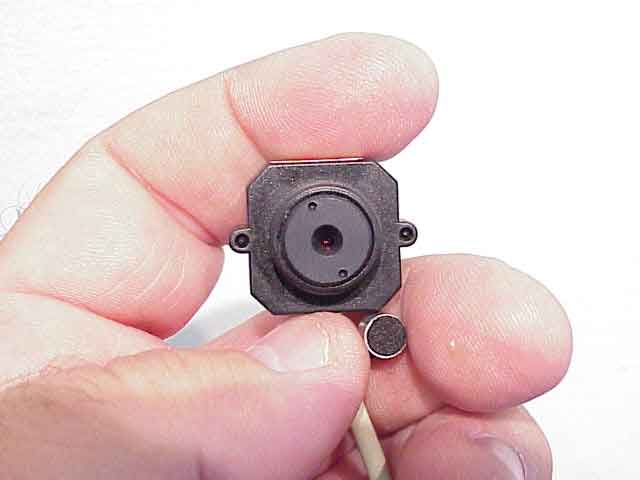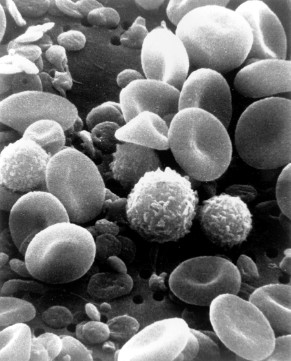 A micro camera. Cameras thousands of times smaller than this are a possibility with nanotechnology for pathogen and cell monitoring (Image Citation 17).  Blood Cells (Image Citation 18). Could they be better explored and manipulated with nanotechnology? Certainly! |
Although many think that medical nanotechnology is only limited to therapeutics, diagnostics and surgery, that is entirely not the case. With nanorobotics, we can take snapshots of the human body. This will help us better understand how exactly the human body works. Thus, our knowledge will be enhanced as well. The workings of cells, bacteria, viruses etc can be better explored. The causes of relatively new diseases can be found and prevented. Nanorobotics may be able to help to restore vision. Genome sequencing can be made much easier. Biological causes of mental diseases can be monitored and identified. Simple curiosity can be answered.
As Richard Feynamn once described this use of nanotechnology for answering biological curiosity, “Many of the cells are very tiny, but they are very active; they manufacture various substances; they walk around; they wiggle; and they do all kinds of marvelous things---all on a very small scale. Also, they store information. Consider the possibility that we too can make a thing very small which does what we want---that we can manufacture an object that maneuvers at that level!” (Citation 1). – Richard Feynman, “There’s Plenty of Room at the Bottom “Tissue engineering” could also be done using nano-materials. Tissue engineering makes use of artificially stimulated cell proliferation by using suitable nanomaterial-based scaffolds and growth factors. Advances in nanotechnology-based tissue engineering could also lead to life extension in humans and other animals.
|